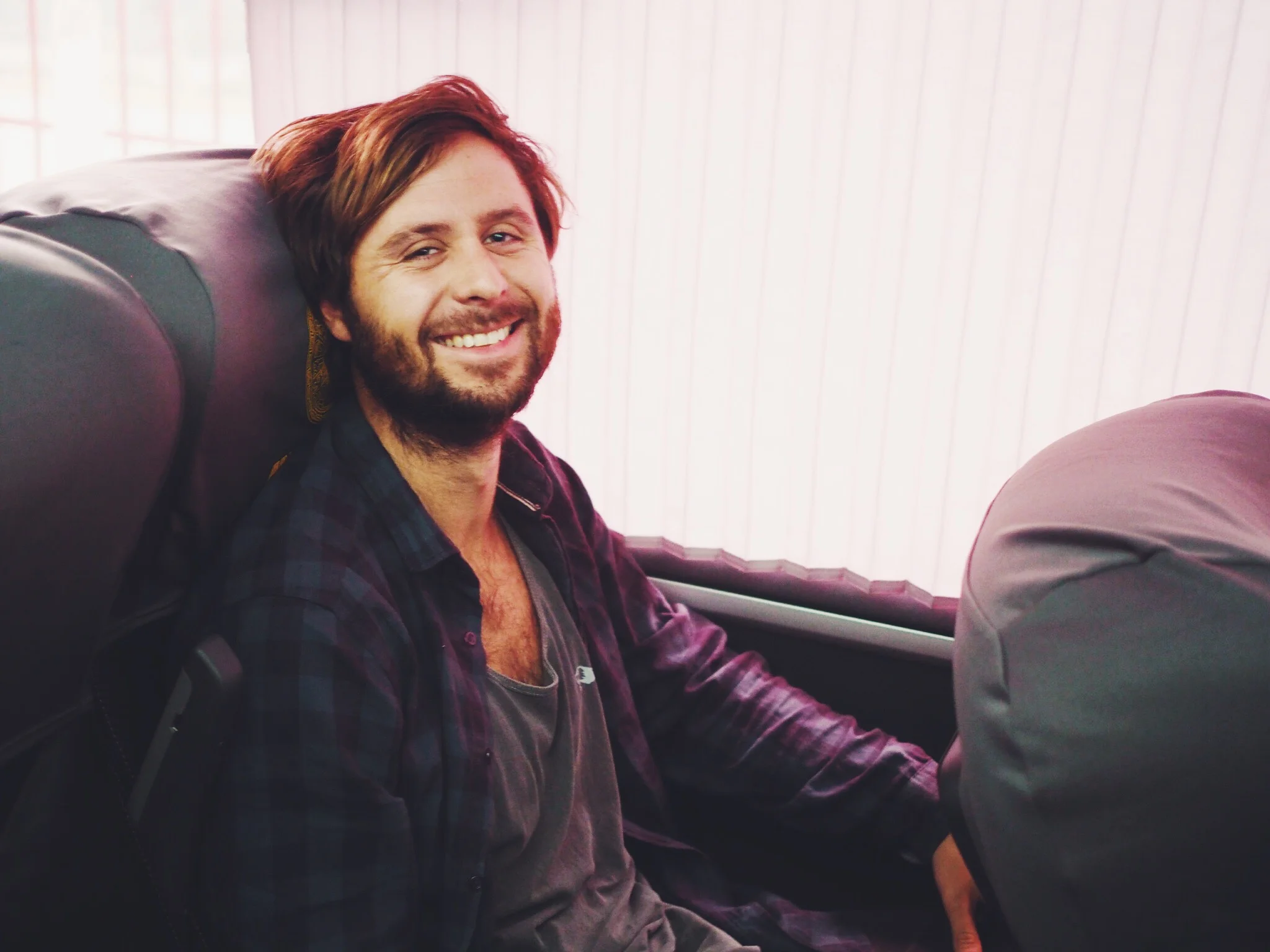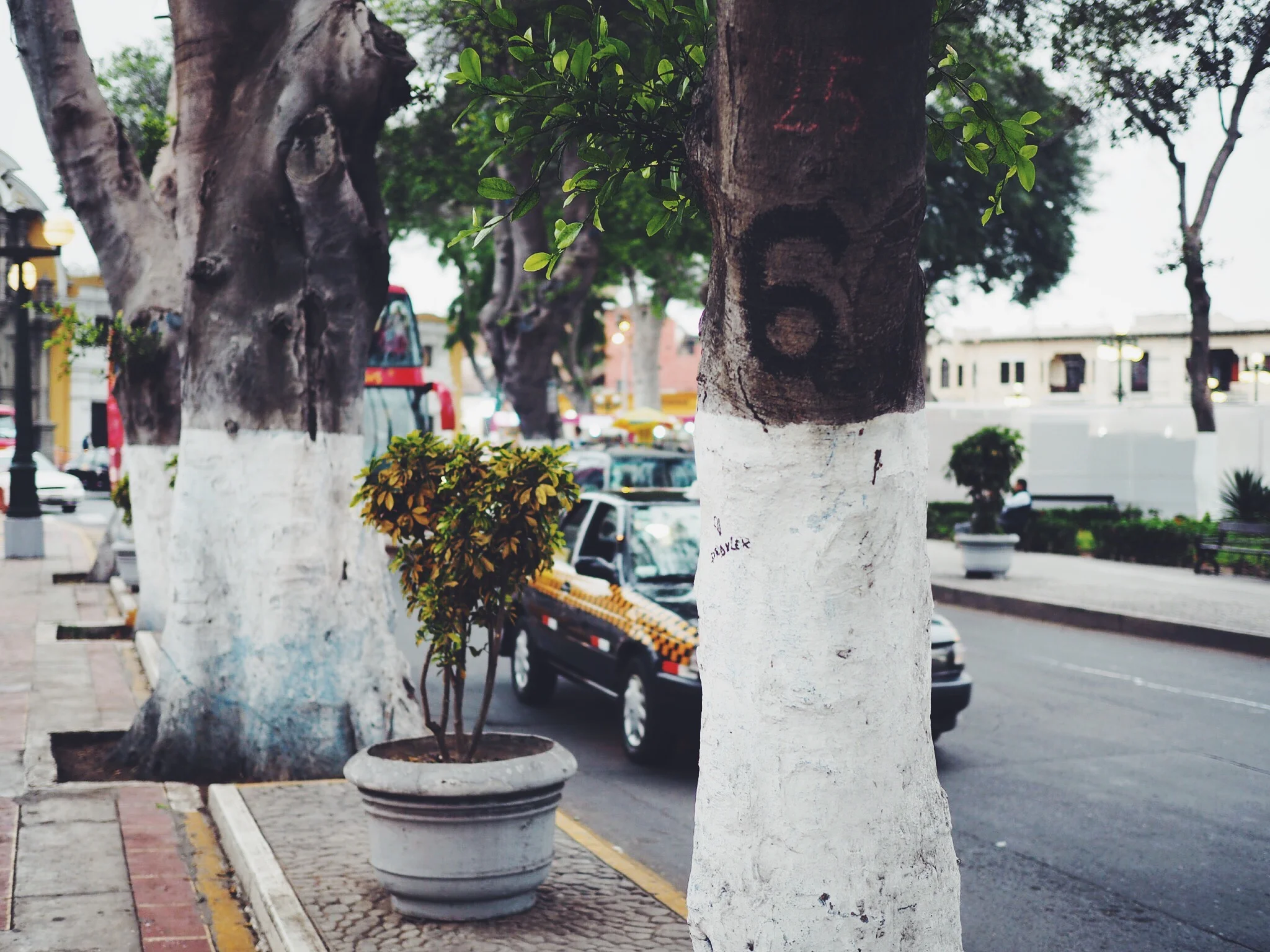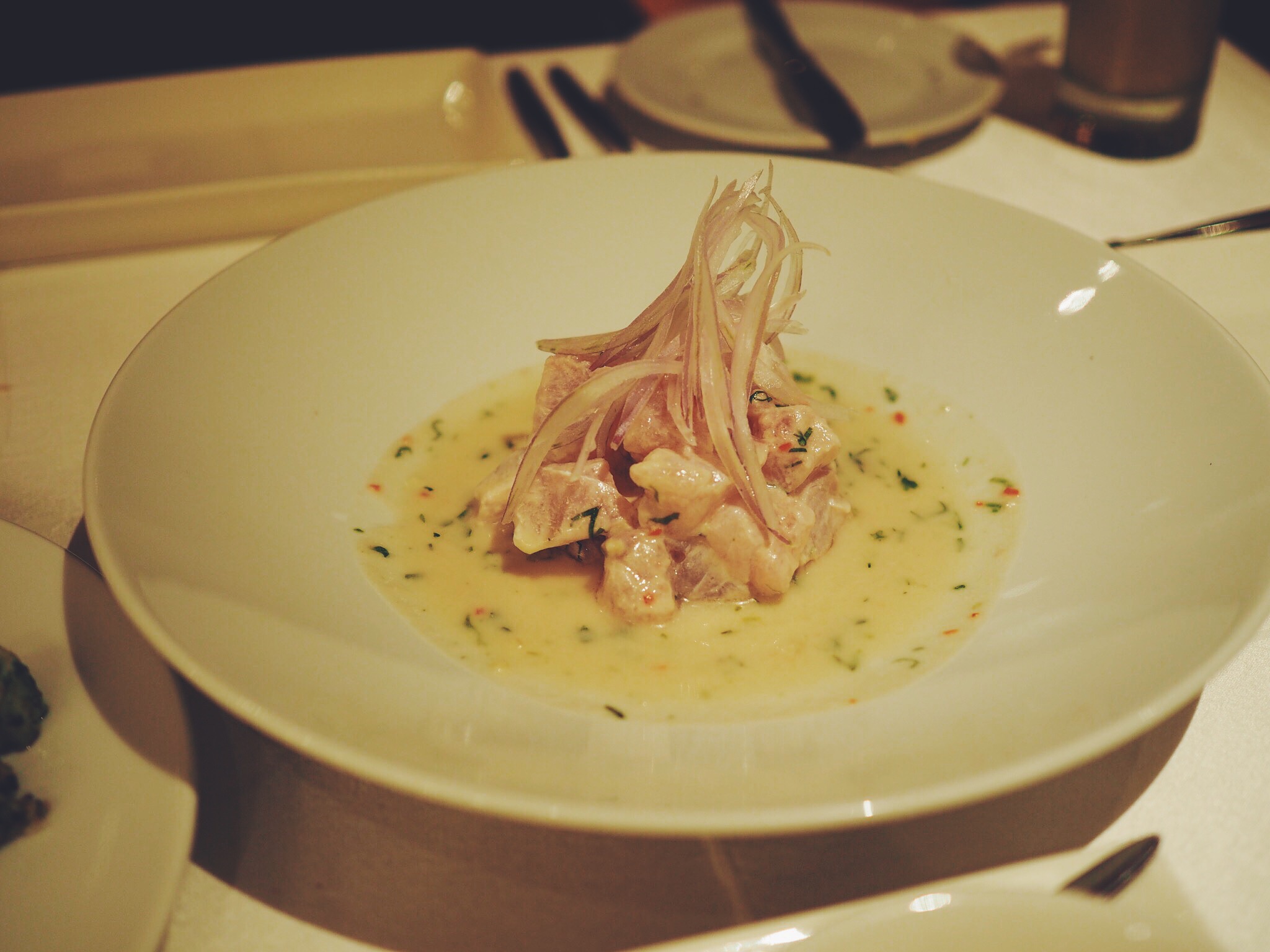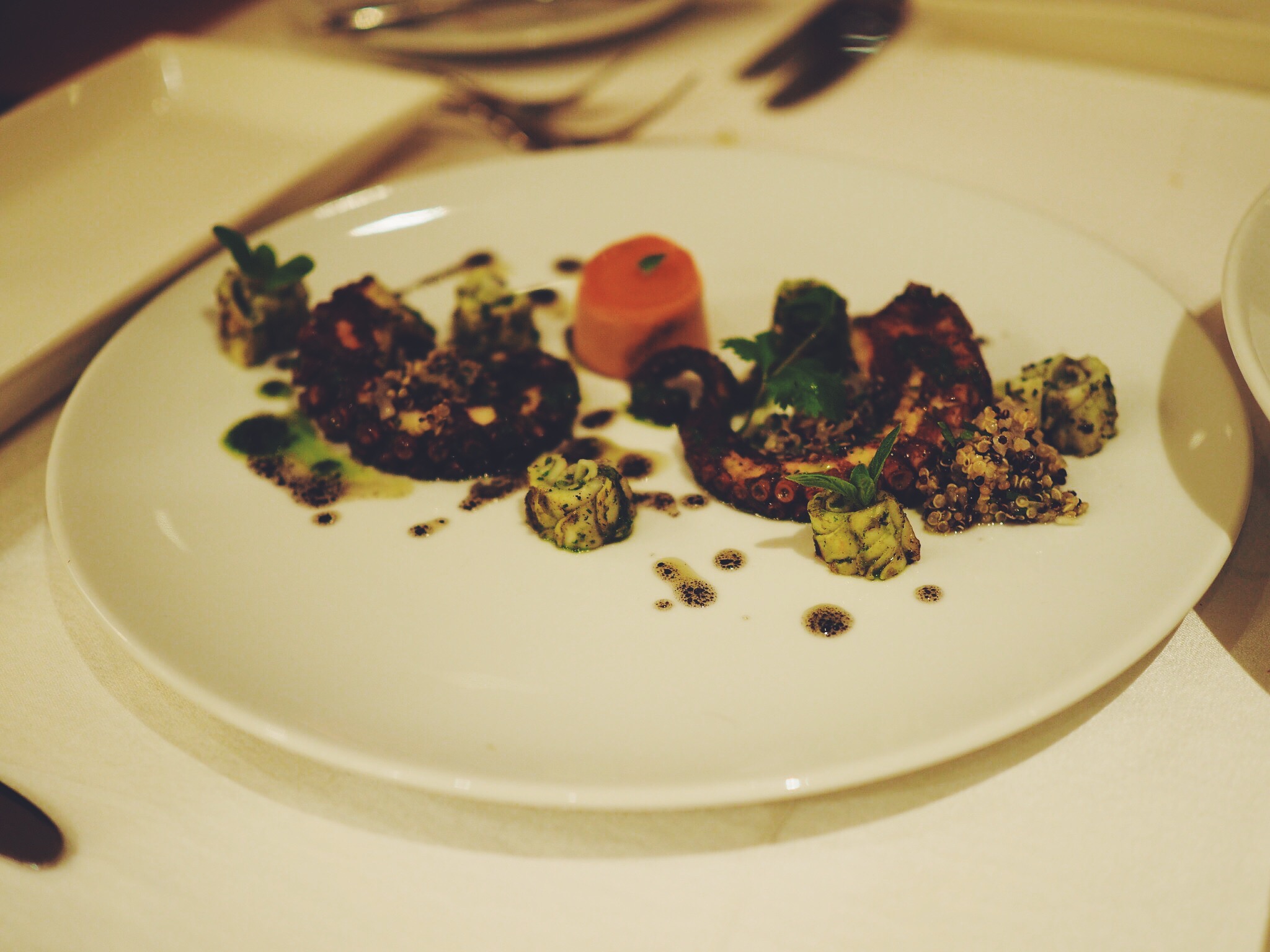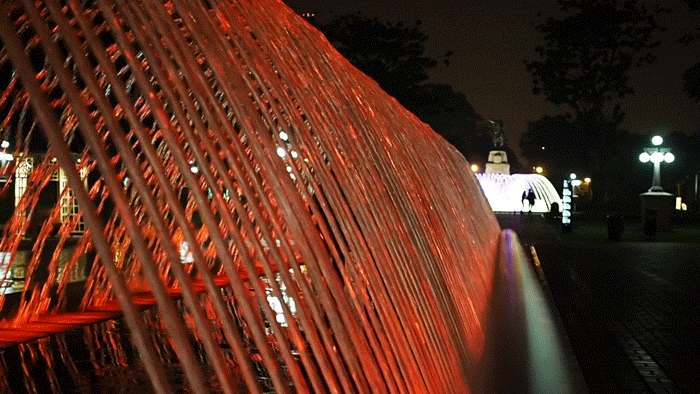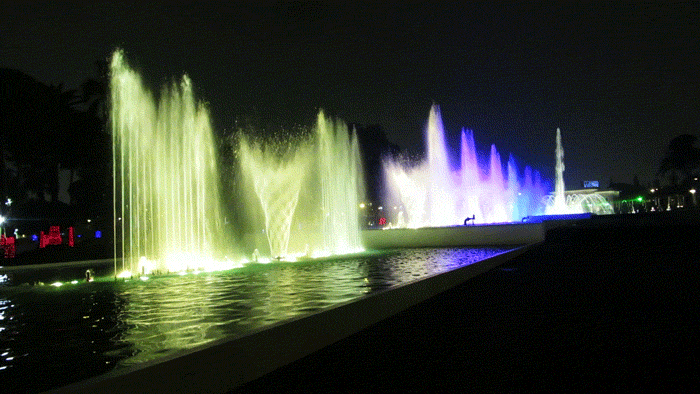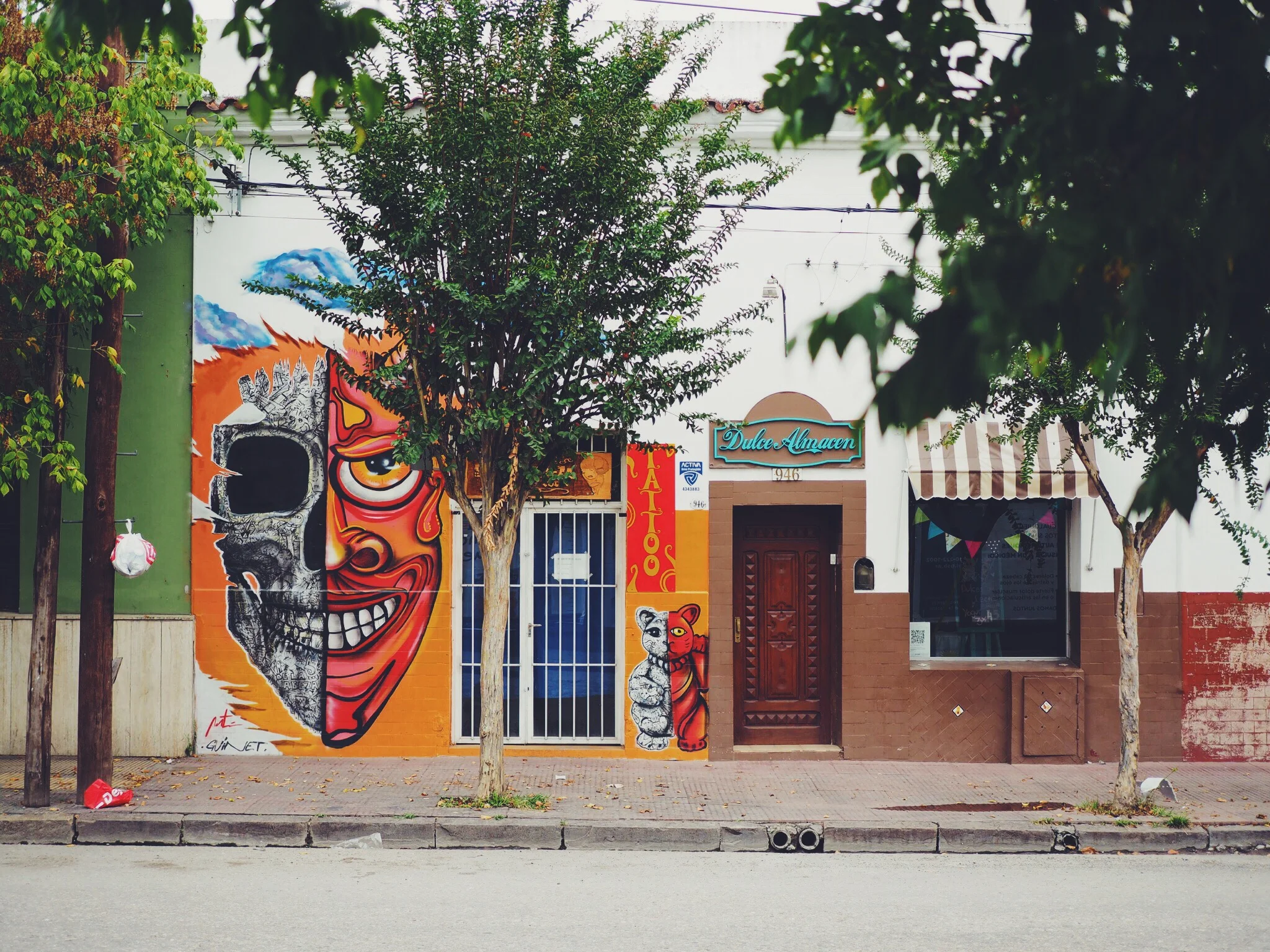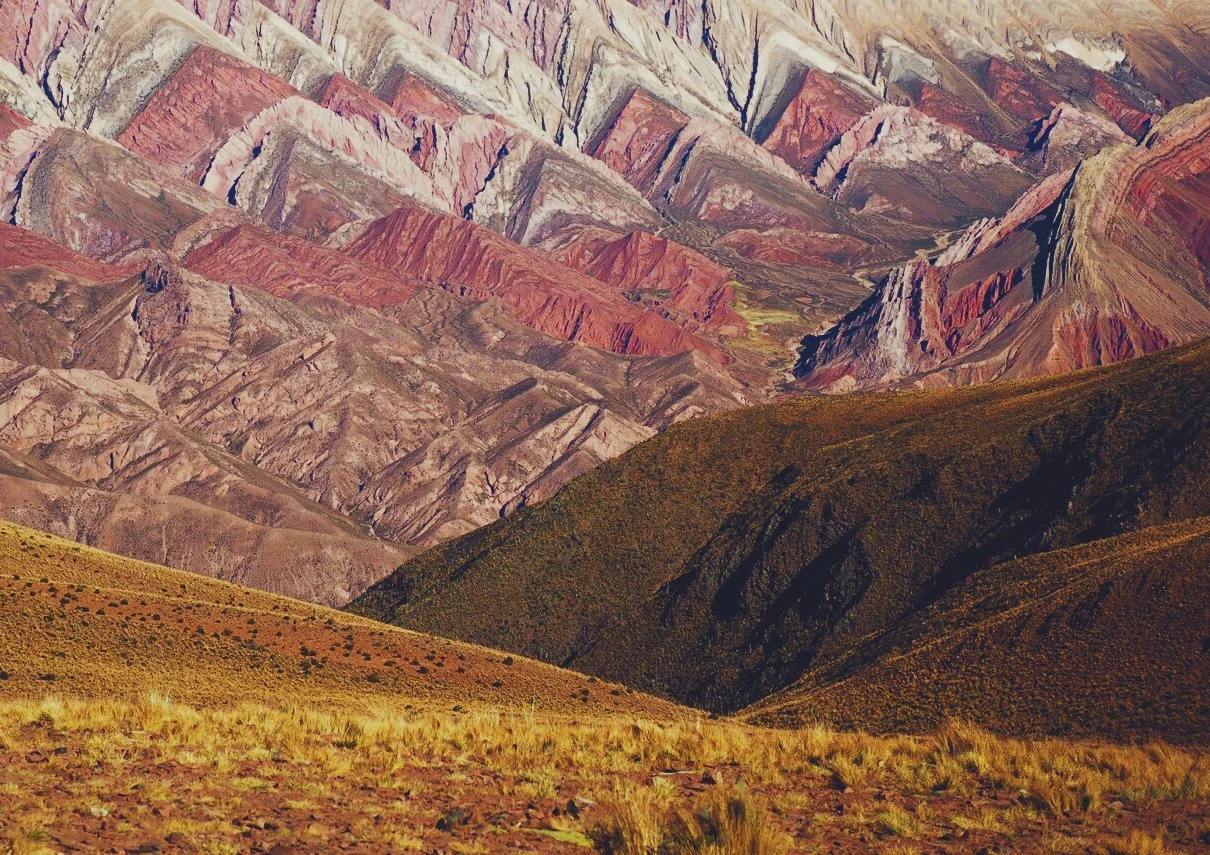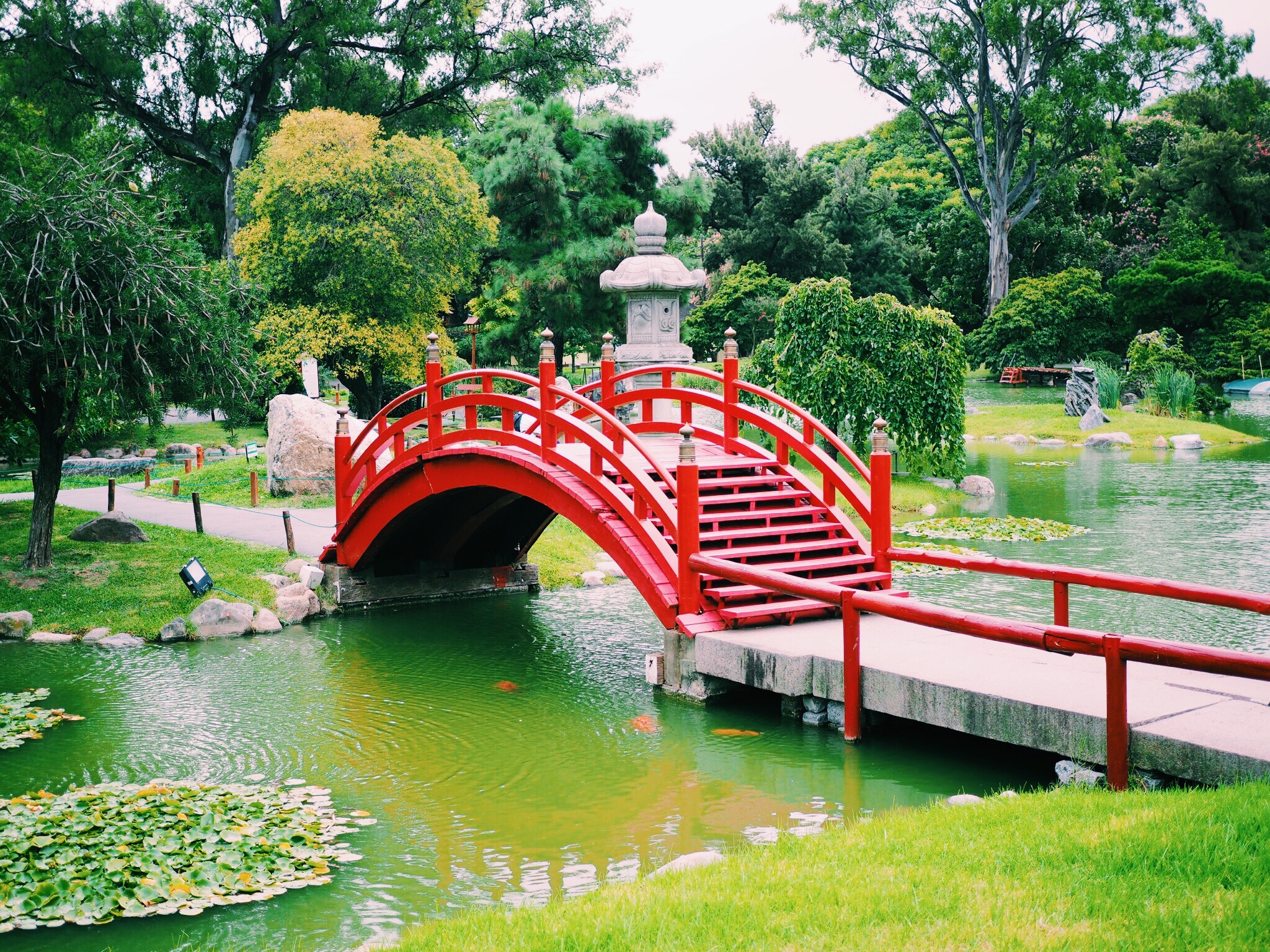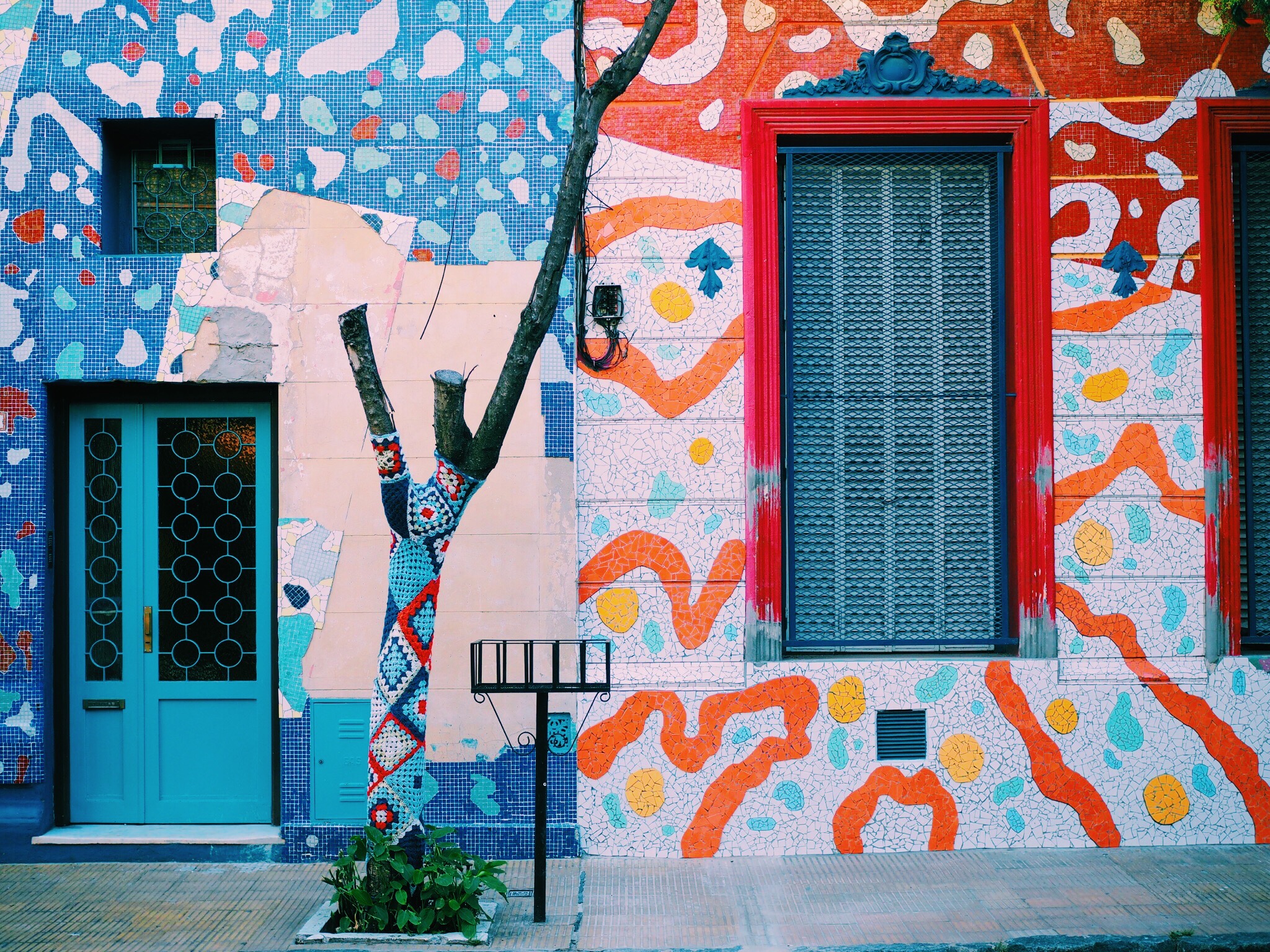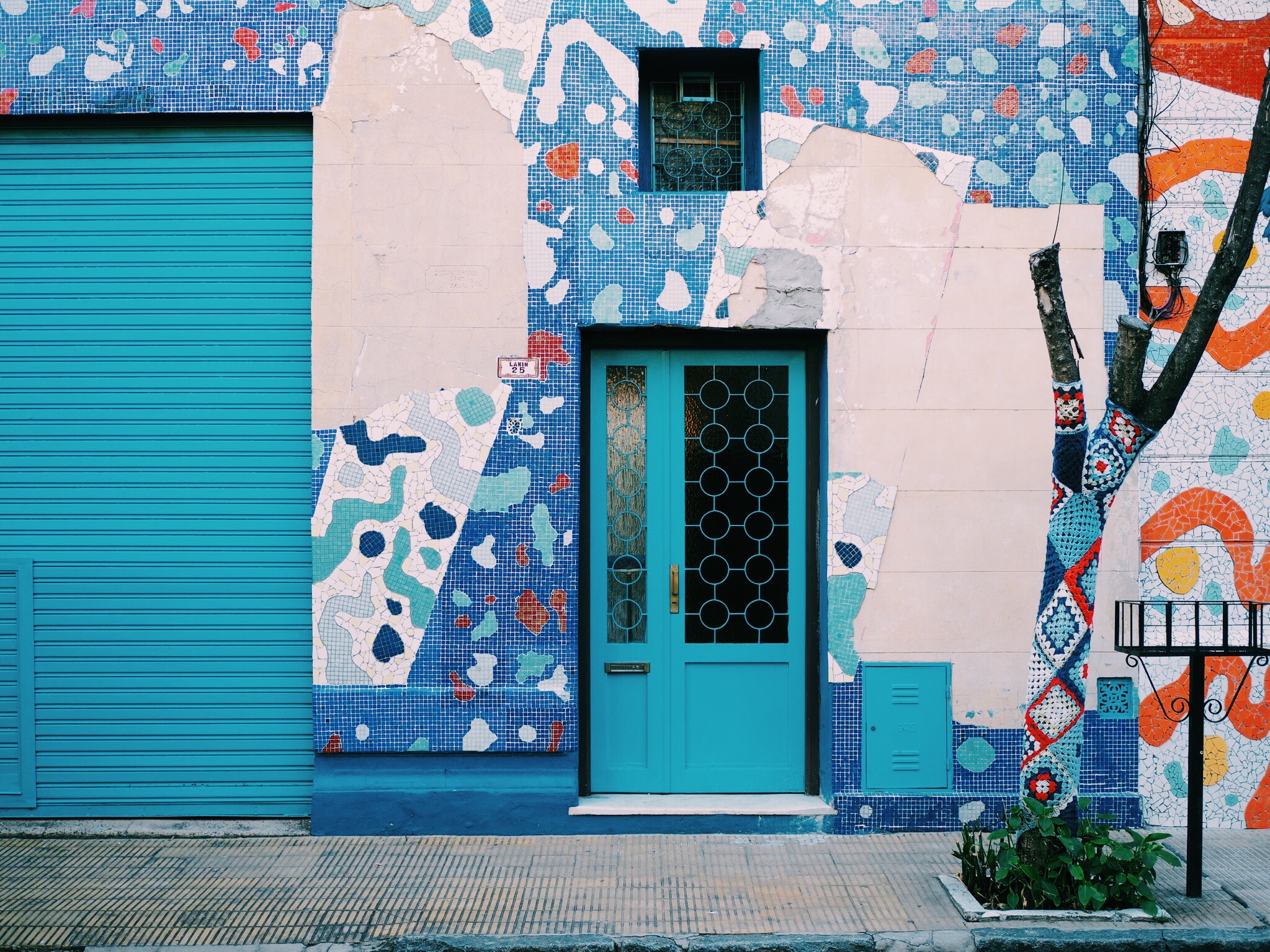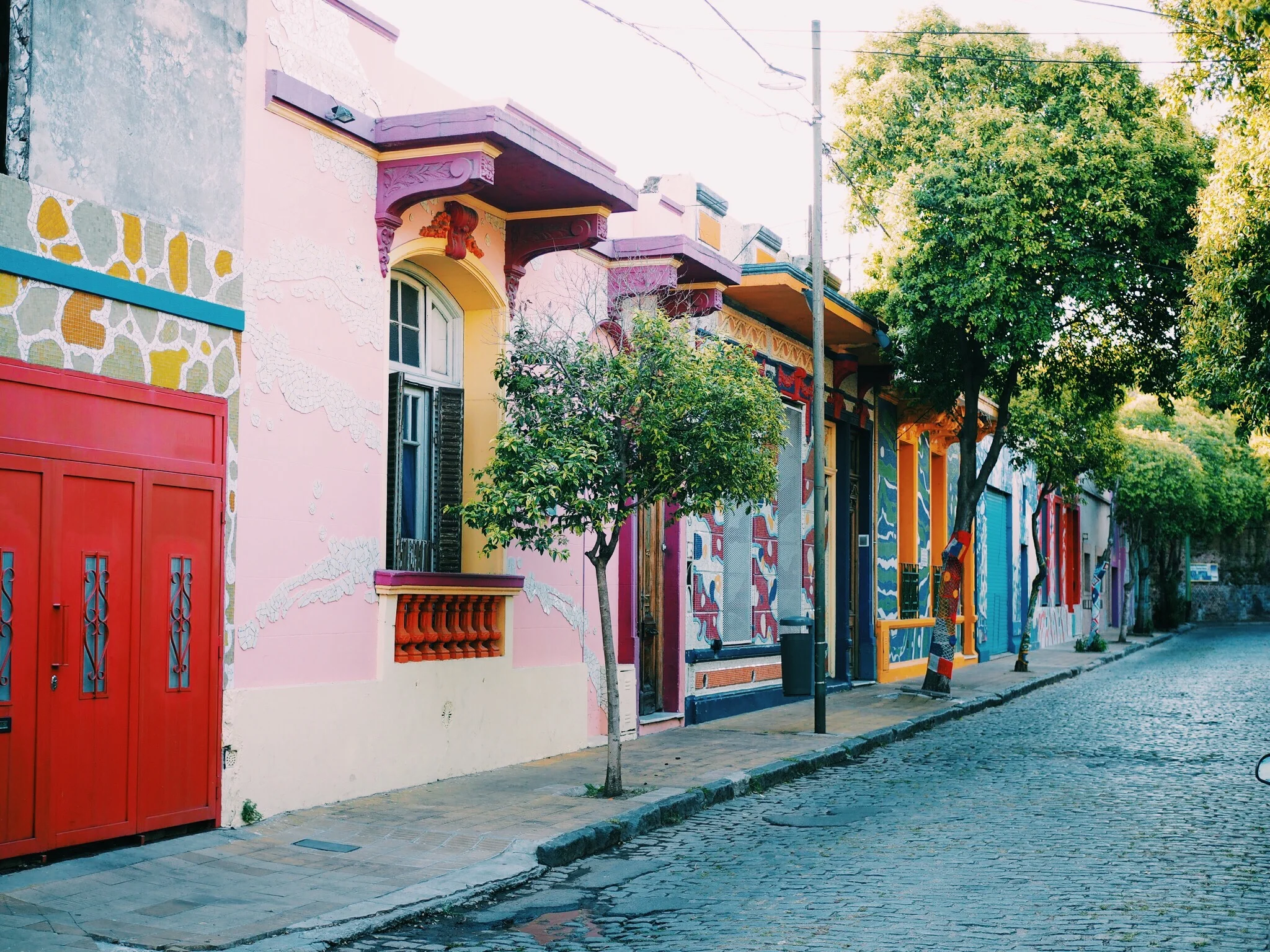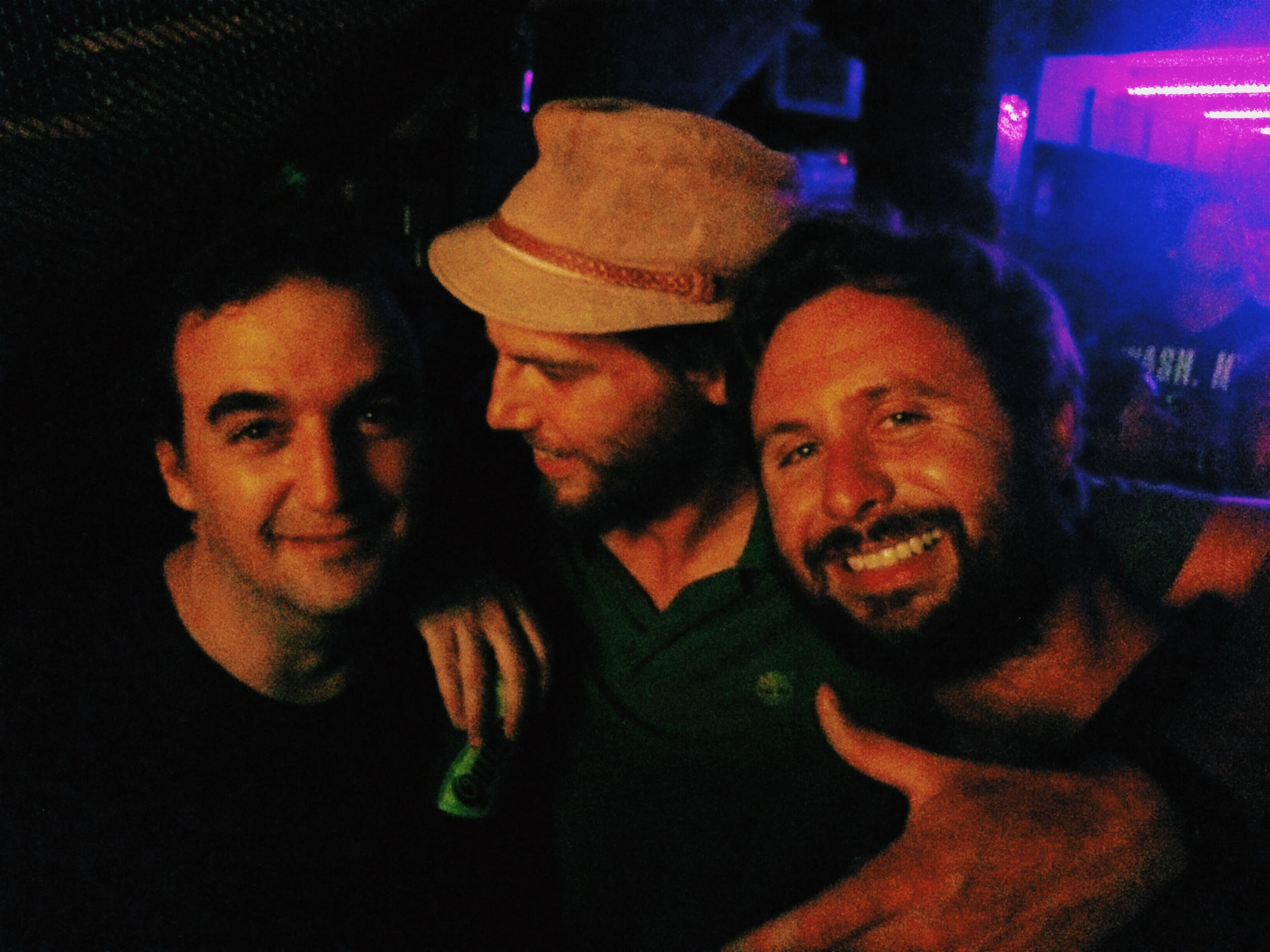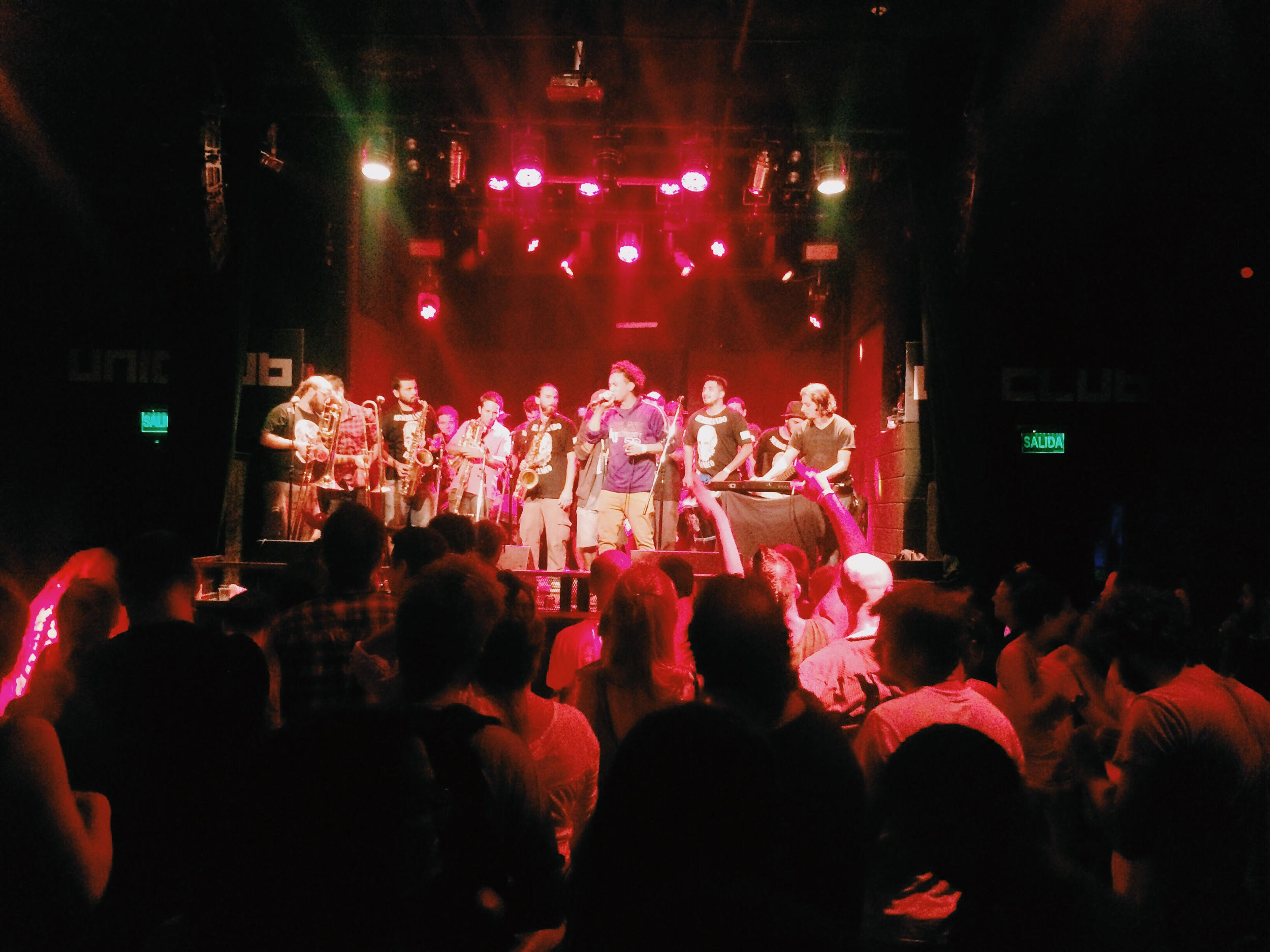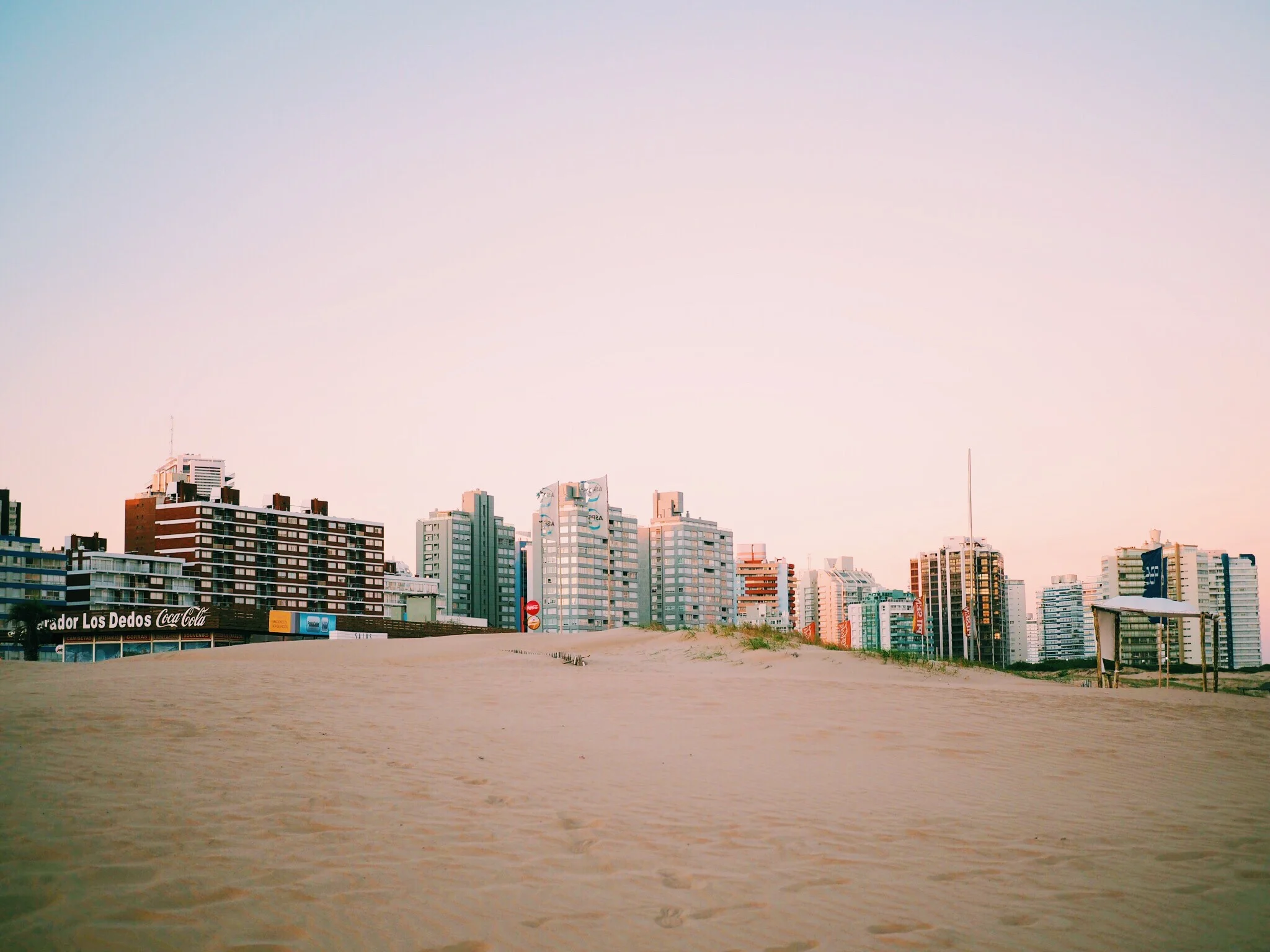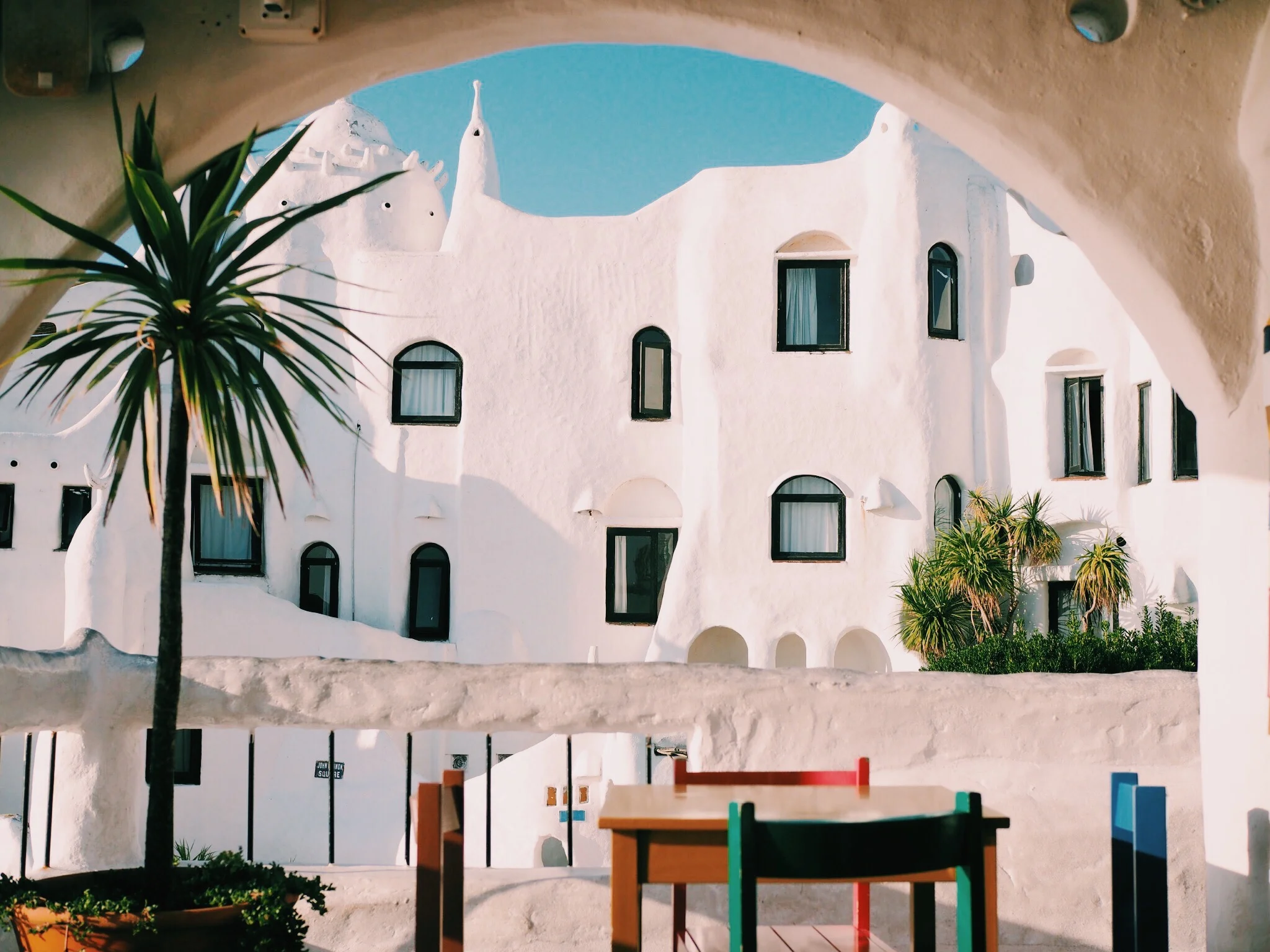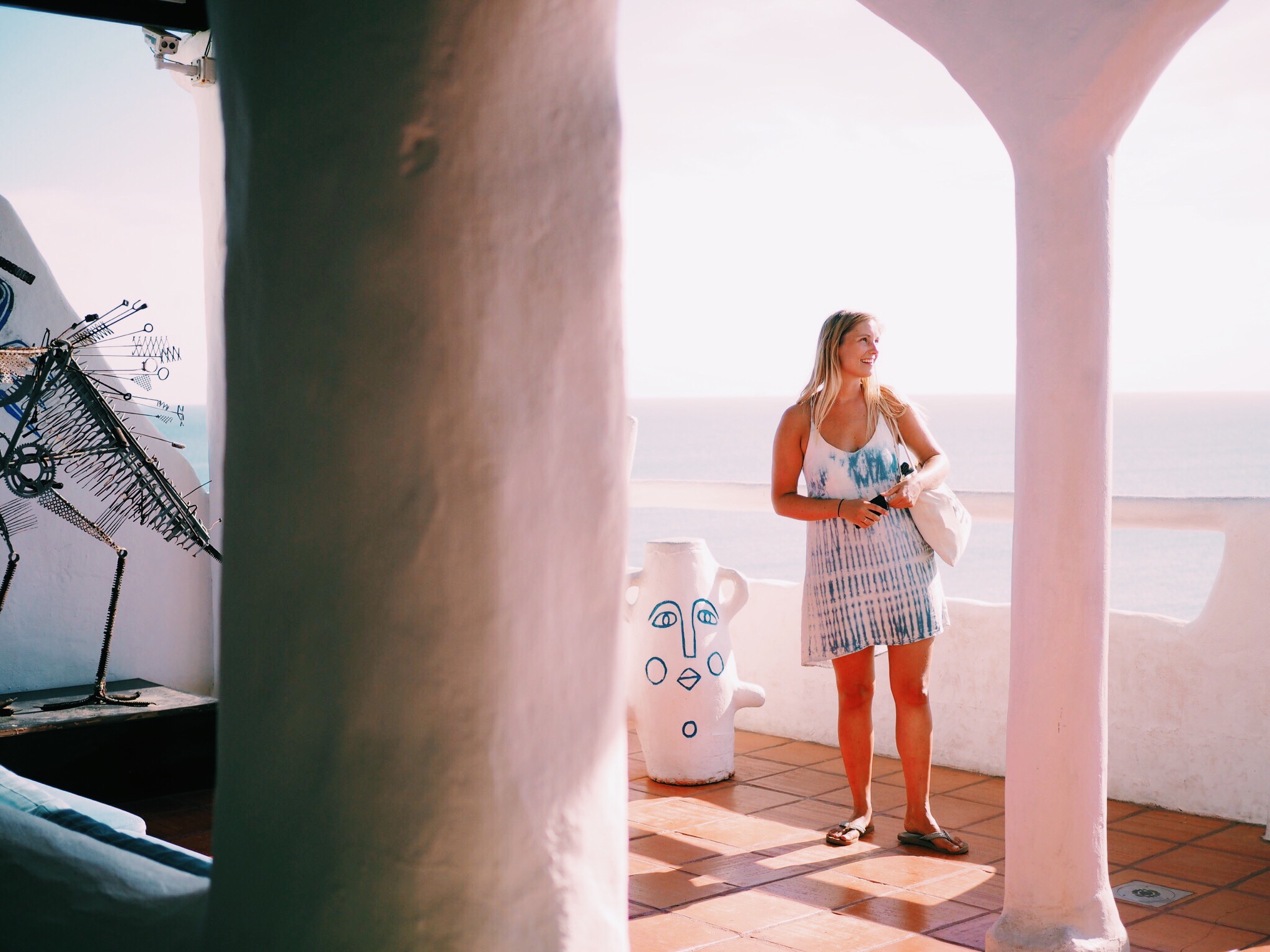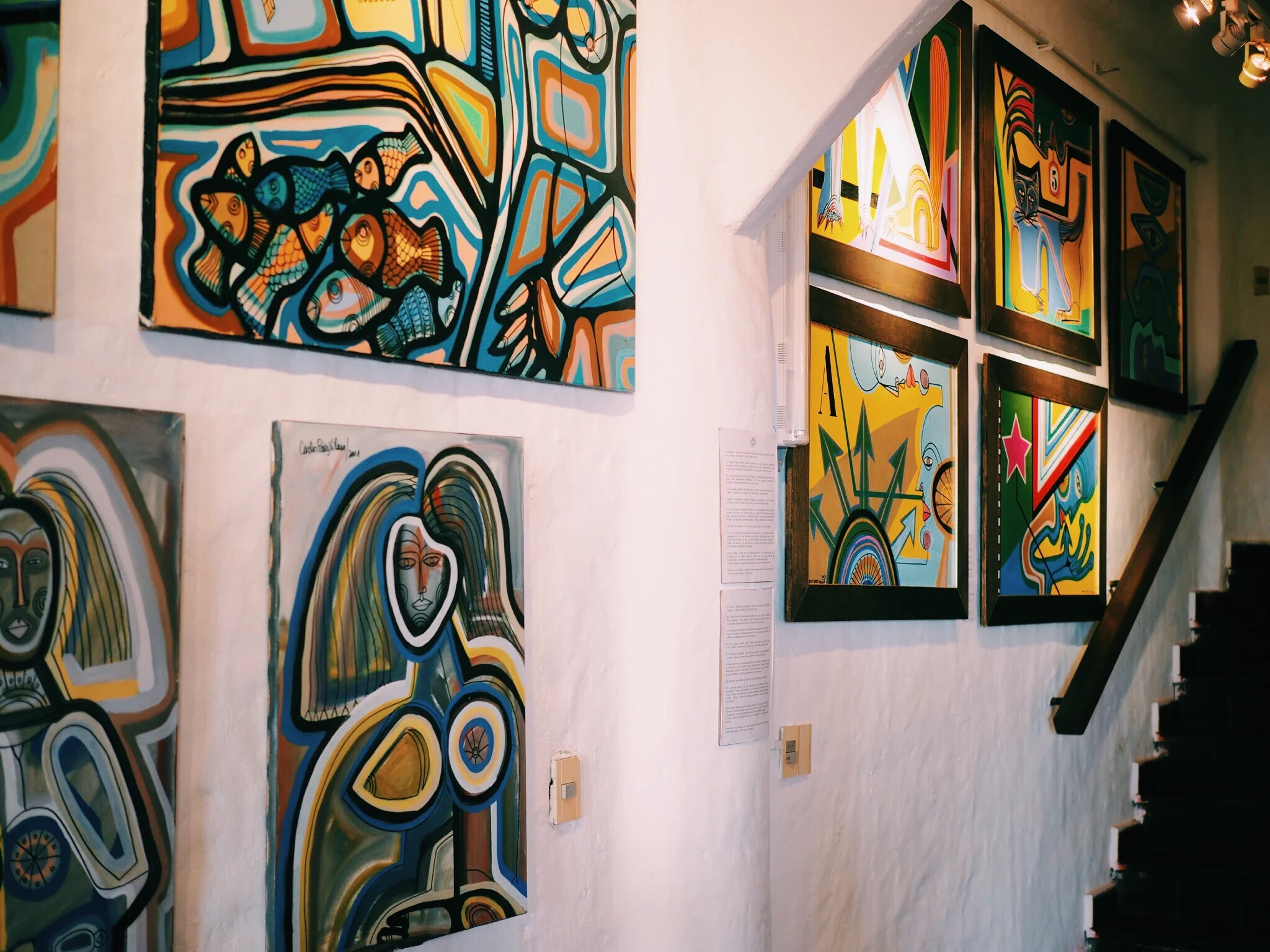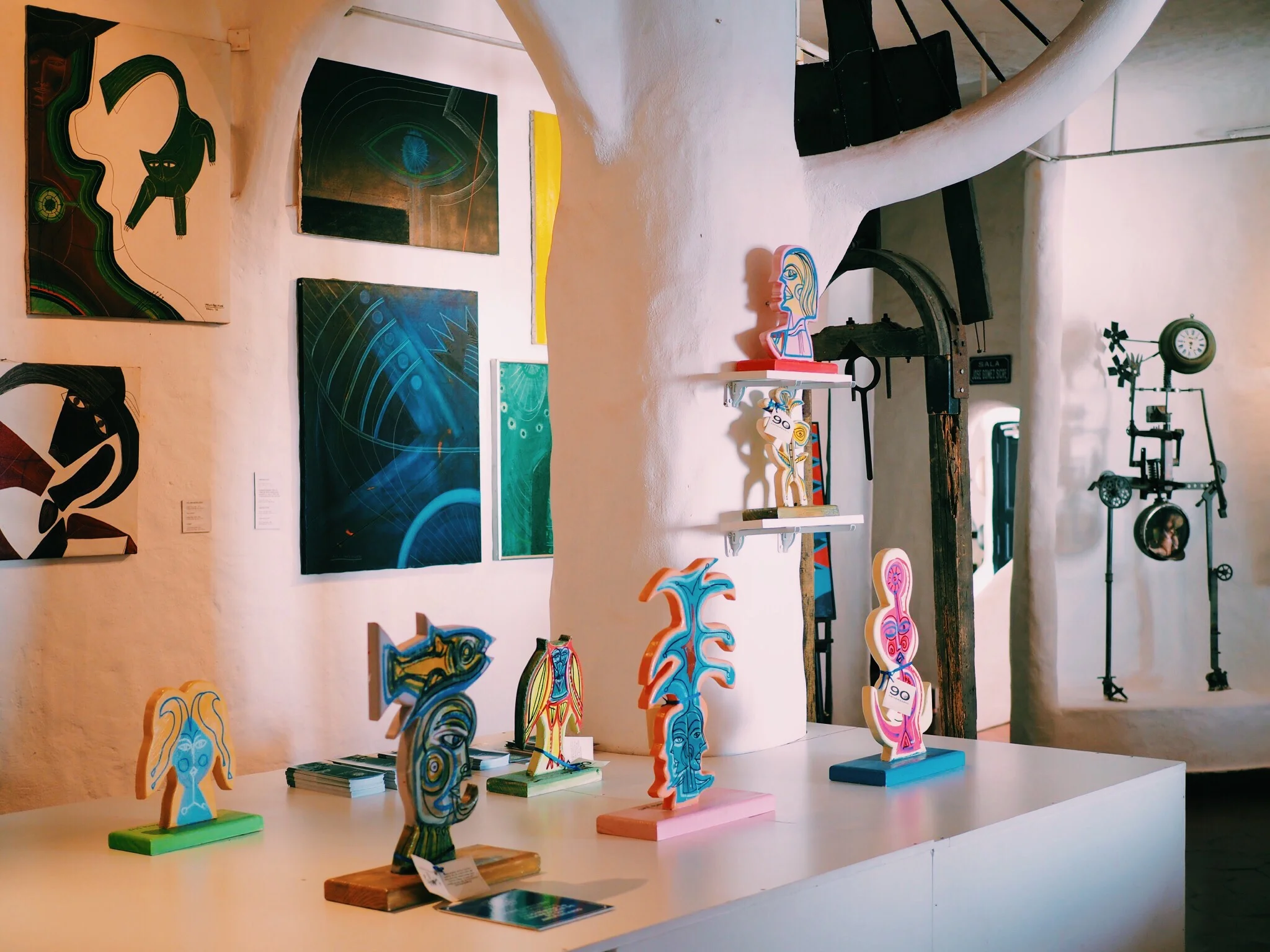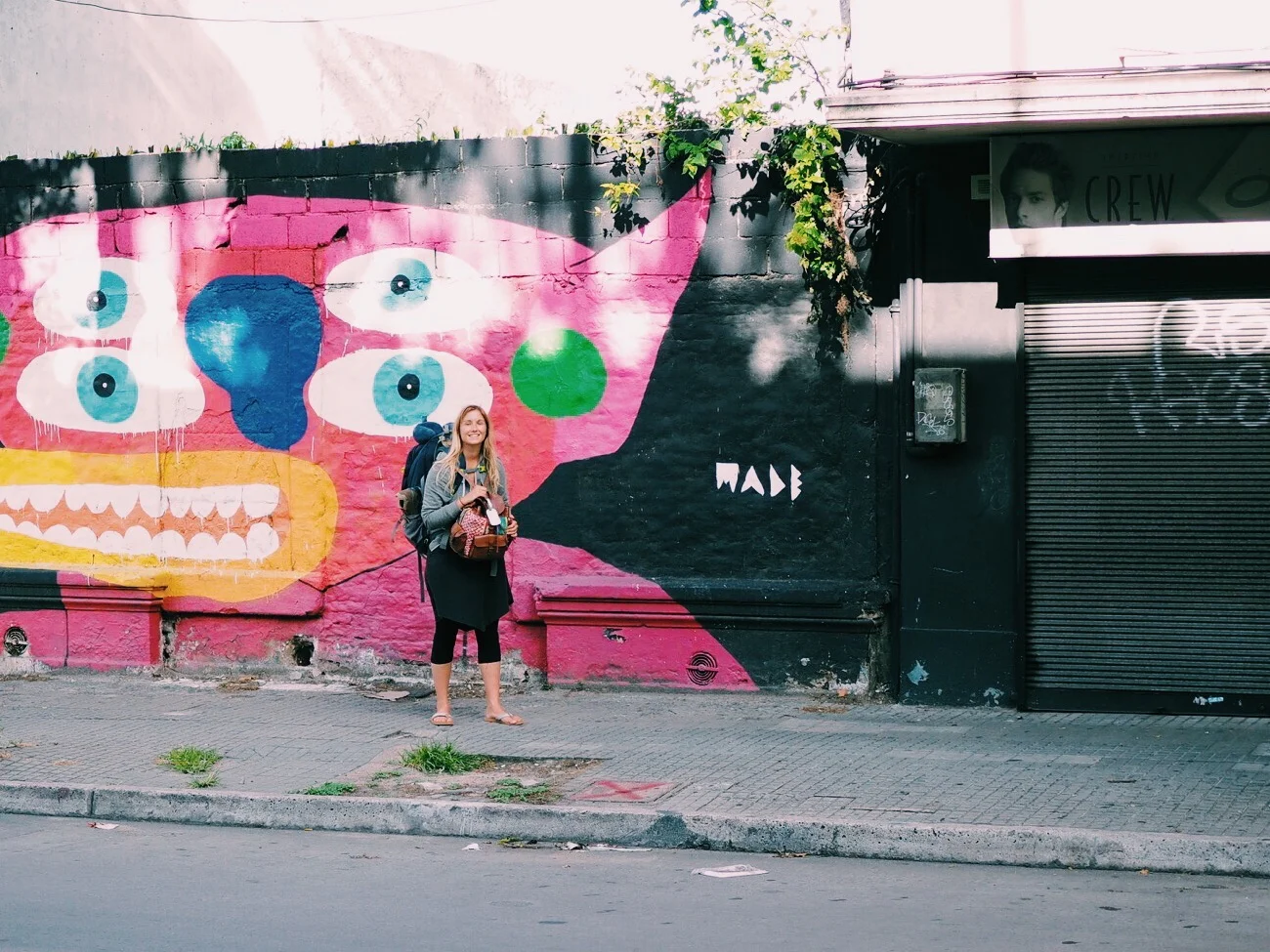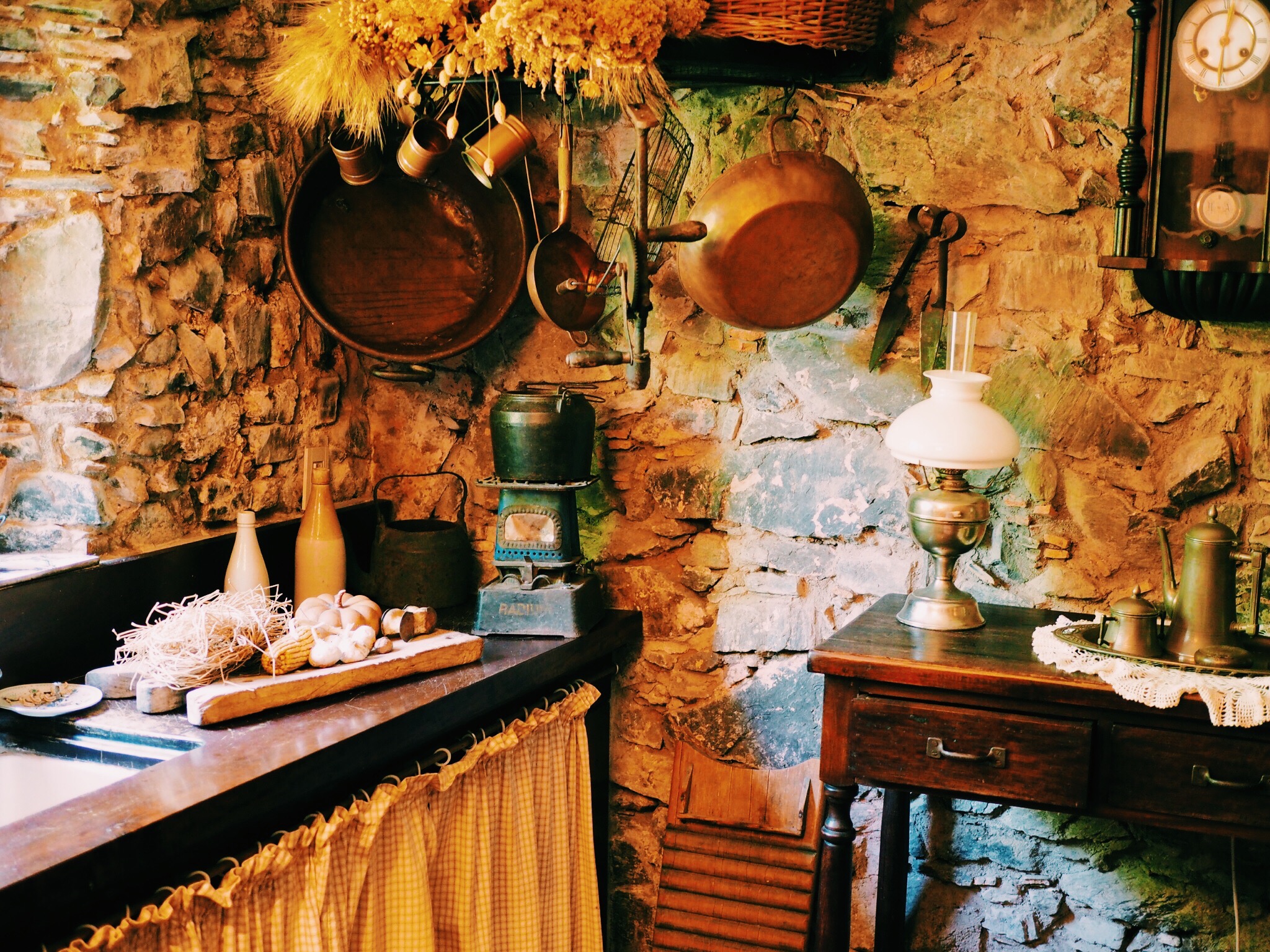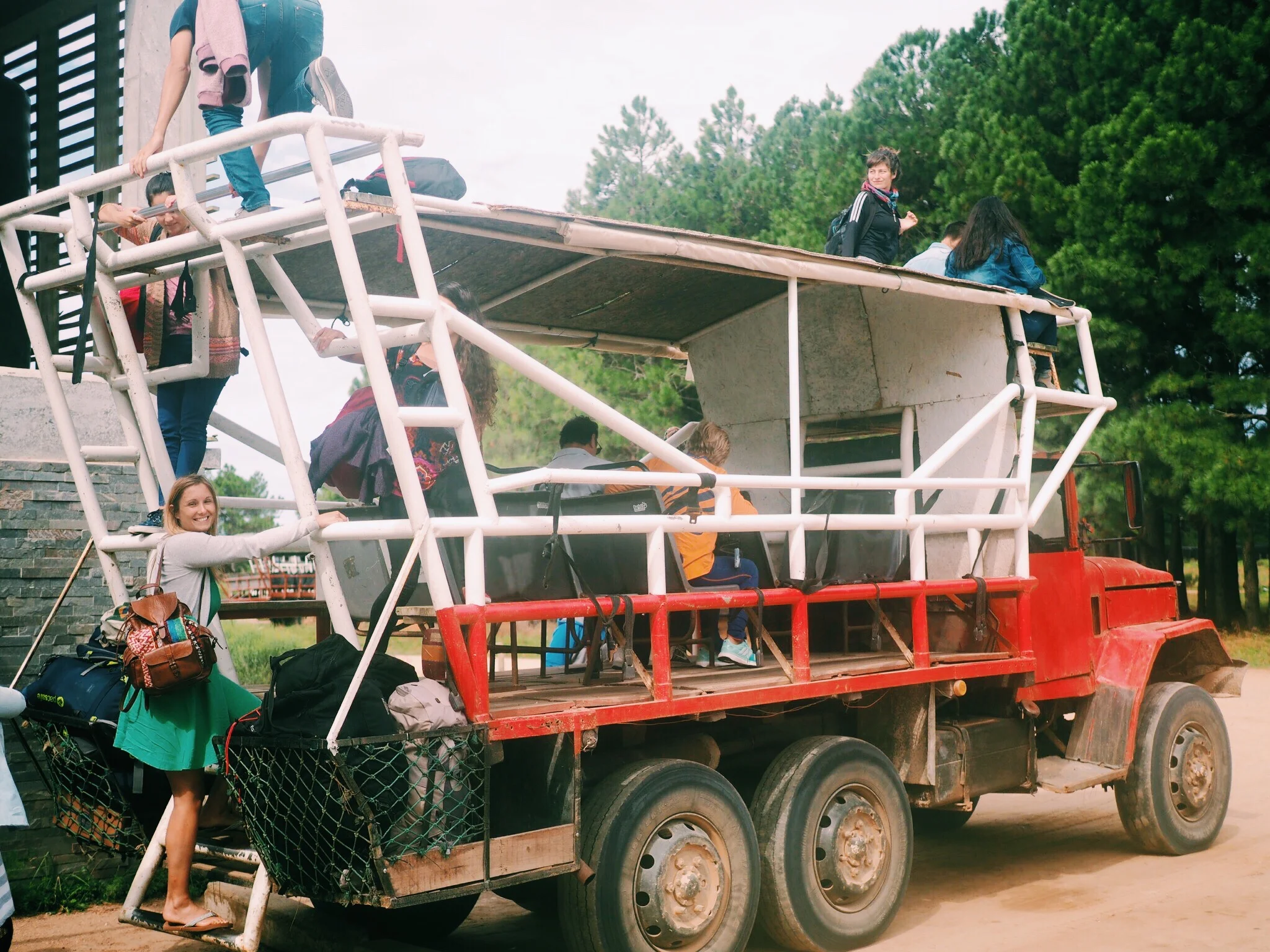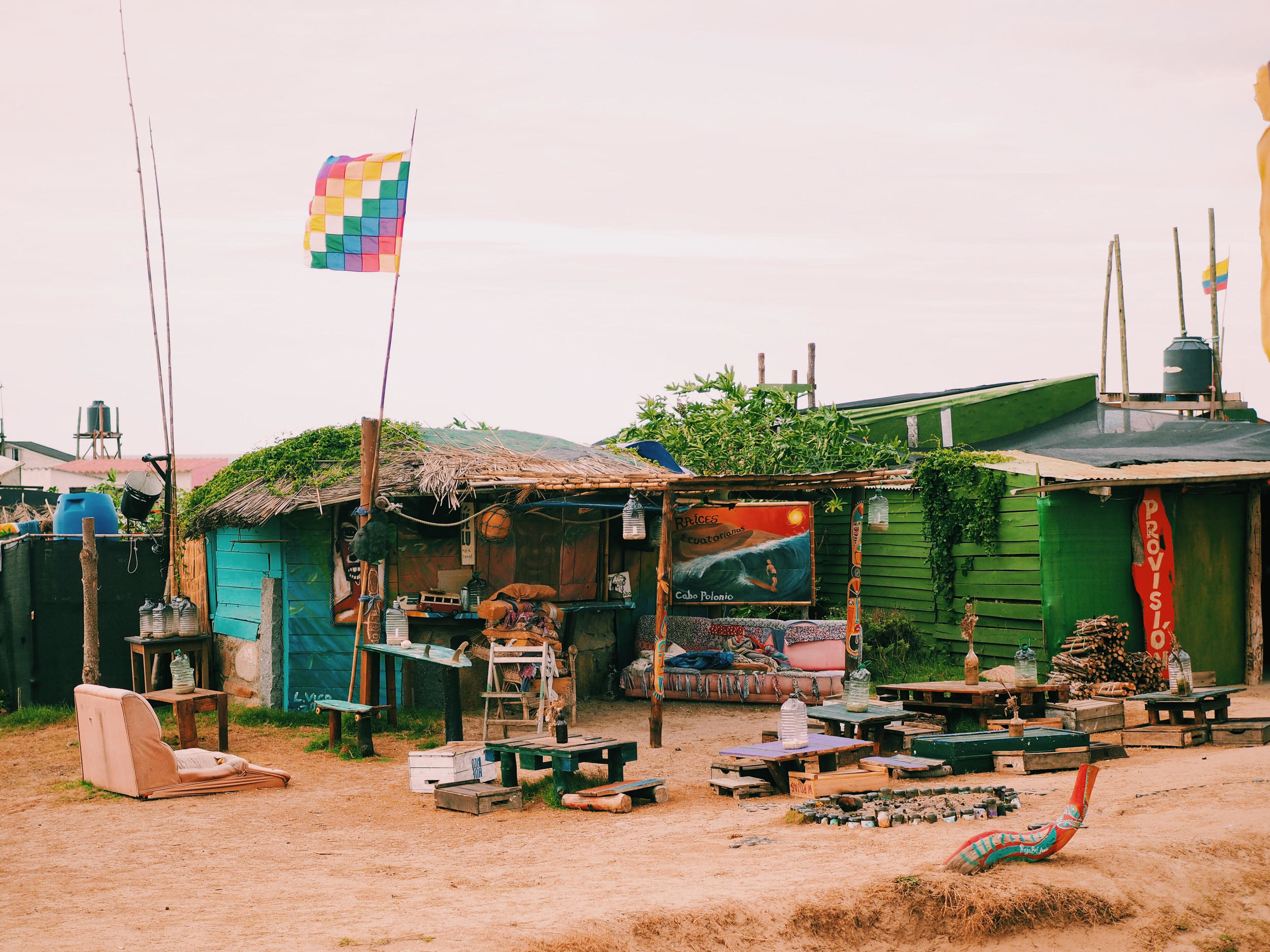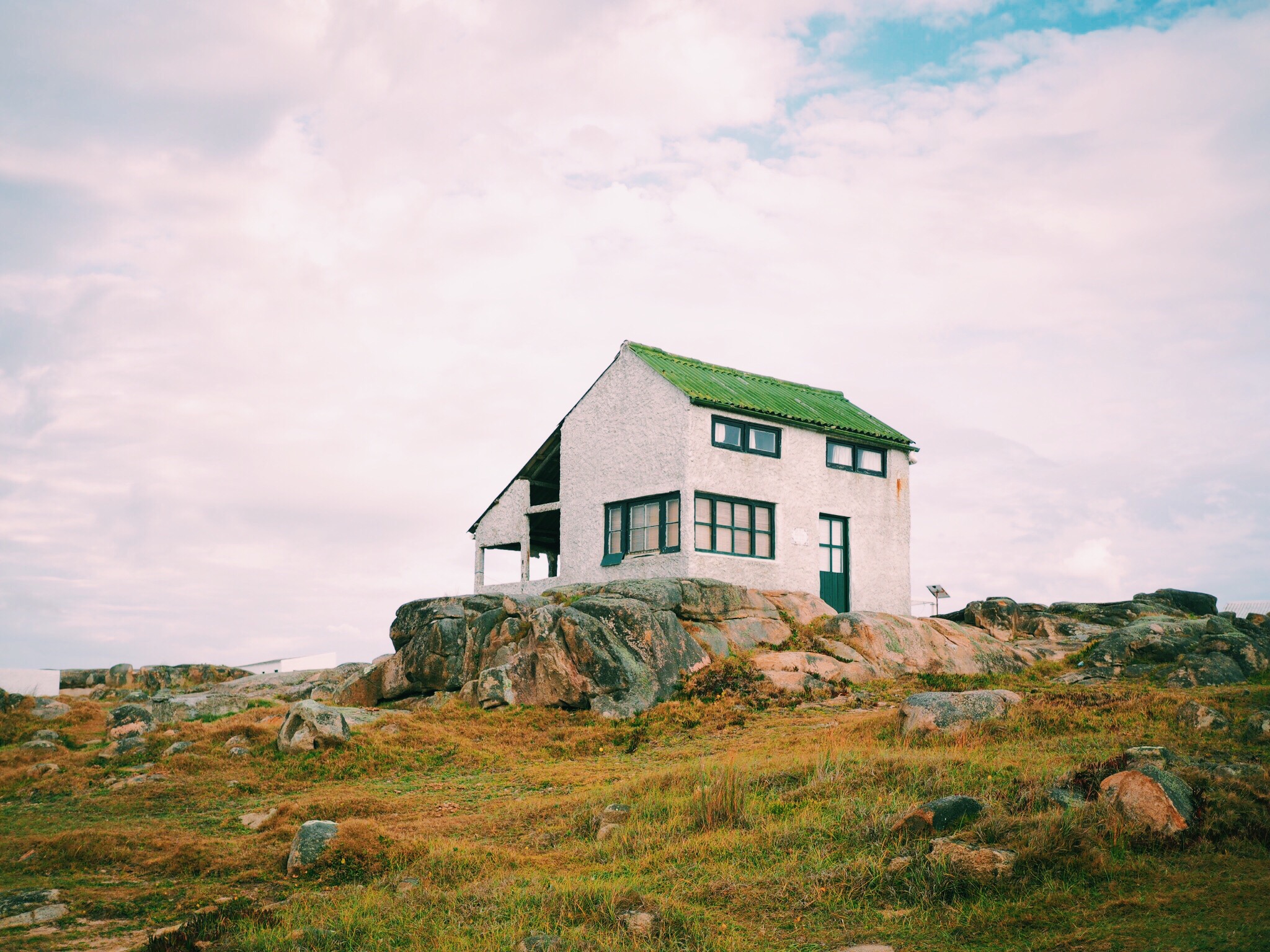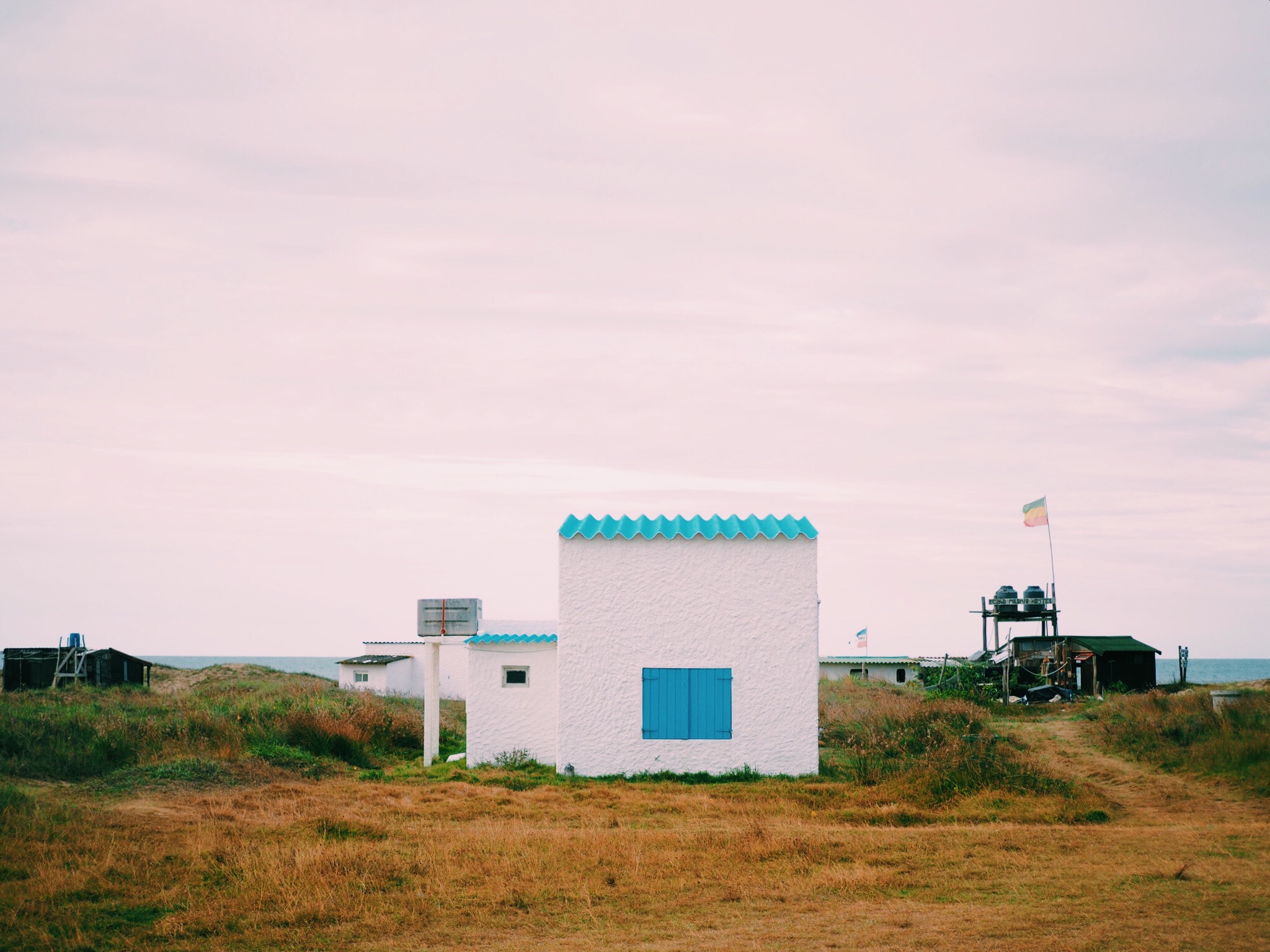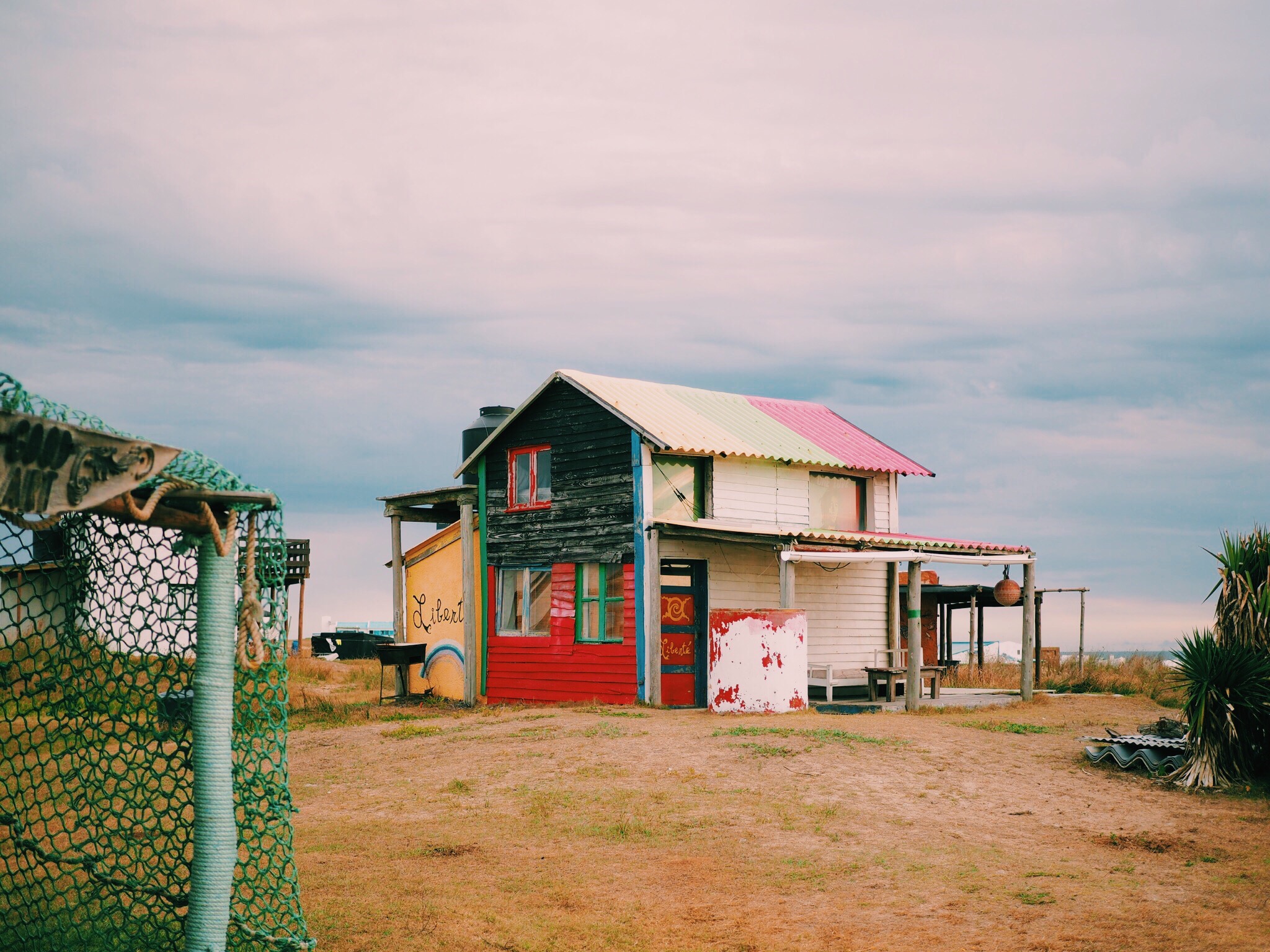48 Hours in Lima
During our trip we have tried to visit the capital of each county, despite sometimes hearing mixed reviews about a few of them. Lima was no exception, and being the largest city in Peru (with a population of over 8 million) we were curious to see what the capital had to offer. We had heard that the food was second to none, and being home to some of the world's best restaurants we couldn't pass up the opportunity to sample some of the best Peruvian cuisine. Good food also comes at a cost, so we decided to spend just a couple of days there so we didn't end up blowing our budget!
From Huacachina we got an early bus northbound along the coastline for around 4 hours before arriving in the main bus terminal at mid day. We found that one of the best areas to stay was Milaflores, a barrio on the south side of the city close to the coast. We checked into Family Backpackers Club hostel, a pink town house with quirky interior but a rather quite vibe. We dropped our stuff and headed out for lunch, keen to try some world-renowned sea food. Nearby was the well reviewed Costazul, a small pub-like seafood restaurant that seemed like the perfect place. We ordered seafood saltado and seafood pasta, which were both fresh and delicious, and a great welcome to the city of Lima.
Life on the move isn't always as exciting, and being the first big city we'd arrived at in quite a few months we decided our first afternoon should be spent doing admin. This included a much needed visit to the hair dressers (it had been around 5 months and Joe's hair was turning into dreadlocks). They did a really good job, and luckily didn't end up with a mullet that was a high risk in Bolivia and Argentina. As Stef had half an hour to kill, it only seemed fair that she got her nails pedicured and painted ready for the beach whilst waiting!
(Note: Not Joe's nails pictured below!)
On our first evening we researched a few places to eat, and came across Panchita, a restaurant located in the Milaflores district. The restaurant is famous for generous servings of grilled meat and fish and a bustling atmosphere. We arrived at 7.30pm and got some Pisco Sours in the bar area whilst waiting for our table. The restaurant was pretty big, with many tightly packed tables, but the waiters were still very attentive and personal. We ordered a ceviche starter to share, which was fantastic with beautiful chunks of perfect seasoned fish and corn sides. For mains we had the swordfish skewers with Andean vegetables and the Soupa de Langostinos that came in a huge bowl with generous servings of large shrimp. It was a fantastic meal and the food and service was just what we'd hoped for in Lima.
The next day was set aside for sight seeing around Lima, and we decided to visit Parque Kennedy in Milaflores, a small but pretty park known for its many resident cats that had claimed the area. It was quite strange seeing so many cats roaming around the park, but they seemed very relaxed there, and the locals didn't seem to mind, with many of them sat contently petting them.
As with most cities we've visited on our travels we decided to take the free walking tour. We met with other members of the group and headed to La Cachina bar to get a free craft ale to kick off the tour. We were all given name badges, which was a bit dorky but helpful to get to know the others quicker. After the bar we all jumped on the local bus and headed to the Plaza Mayor de Lima in the historic centre. In the plaza were many beautiful buildings including the Cathedral de Lima and the Government Palace of Peru. As it was a Saturday we were able to catch the changing of the guards in the palace, which had drawn a pretty big crowd of locals and tourists alike.
After the main square we walked to the Monastery of San Francisco where our guide gave us a brief history of Lima, including the conquest of the Incas by the Spanish. He also explained how the architecture had been destroyed by heavy earthquakes, meaning many of the buildings had been rebuilt 2, or even 3 times. After a quick snack break (where we took advantage of the fresh churros!) we headed to a beautiful old railway station with a glass ceiling and intricate metal arches. Our guide explained that it is now used as a royal post office.
The tour was concluded in the central market, where we sat down and were told about the various types of Pisco, a brandy made from distilled grape wine, including Puro (pure), Acholado (blend), and Maracuja (passion fruit) Pisco. We got to sample each one, some being more pleasant than the others, but it was a nice gesture from our guide and interesting to sample the different types. Overall the tour wasn't quite as interesting as other cities we had visited, but the effort the guide made was very apparent, and we still got to see a few sights we otherwise would have missed by ourselves. After our tour we headed to the Barranco district and wandered around the boutique shops and quaint cafes.
That evening we met up with Daniel and Amanda, an Australian couple we'd met a few times before in Peru who are doing a similar trip (you can follow their great blog here) and headed for some dinner. As we were in the city of world-class food we wanted to treat ourselves and so headed to La Locanda, a restaurant situated inside the Swissotel in the San Isodro neighbourhood with great reviews.
On entry we noticed the restaurant was pretty fancy, and felt a bit under dressed, but the waiters seemed friendly and quickly sat us down at our table. We decided to share two starters, grilled octopus and ceviche, which were both delicious. For main course we ordered the short rib cannelloni (recommended by the waiter) and the pork shoulder with vegetable risotto. The presentation was amazing, and the flavours didn't disappoint.
After our fantastic meal we headed to the Parque de Reserva, a centrally located park with many water fountains, and we haggled down a taxi as much as we could and made our way there in a hurry before it shut. We thought it closed at 9pm, but on arrival we realised we had an extra hour which made it a lot less stressful. After paying 10 soles each we walked through the entrance and were met with an amazing 40 meter high illuminated water fountain with classical music playing around us.
As it was late we pretty much had the place to ourselves, and spent a fun hour waking around the various colorful fountains. Some of them were interactive, including a timed fountain that you could walk inside of, and one that even arched right over you to create a tunnel. It was a great way to end our short time in Lima.
(Photo Credit: Daniel Tran
On our final morning we had booked a bus to Mancora at 2pm, and so headed for a breakfast in the nearby Buenavista cafe for a great view of the ocean. We wandered through the Parque Isaac Raban to the cafe perched on the hilltop overlooking the sea. We ordered apple pie, corn bread and hot chocolate and relaxed and watched the surfers in the distance before our long 18 hour bus journey to the northern beaches of Peru.
For us, Lima was never a key stop-of during our trip, and although short, we felt 48 hours was enough to fit in everything we wanted to do. The food was by far the highlight of our visit, and definitely the best we'd had in South America, making it worth the trip for that alone. Seeing the water fountains at night was a nice bonus for us, and it was nice to enjoy an evening with friends we had made on our travels. We were glad we stayed in Milaflores, as it was a nice and safe area, but the city just didn't to have the vibrancy or interest of Buenos Aires or Cusco, and so we didn't feel too bad that our visit was short but sweet.
Galapagos Planning in Mancora
Before heading to the much anticipated Galápagos Islands we needed some time to research the different options for cruises, diving and day trips, as well as work out a budget to keep our expenses minimal. To do this, we wanted to stop off in a place not too far from Guayaquil airport, and Mancora, a relaxed surf town in the north west coast of Peru, seemed like the perfect choice. We got a comfortable overnight bus (Cruz del Sur) from Lima that took 21 hours, and arrived at the small, slightly run down town just before lunch.
We checked into Laguna Surf Camp, a hostel located a stones throw from the beach, and complete with grass huts, hammocks and a small pool. It was the perfect stop-off for which to do our research. The only downside of the hostel was the absence of the owners, who didn't seem to be around at all for advice or help on what to do in the area. This didn't matter too much as luckily there was wifi so we could crack on with our research for the Galapagos.
The following day we took a break from research and headed to the beach. We stopped off at Green Eggs and Ham for breakfast, a wooden clad house in the beach serving excellent breakfast options. We then strolled down to the left side of the beach away from any crowds and sunbathed and swam for a few hours.
That evening we headed to Aqua for food. It was one of the best restaurants in Mancora, although due to the size of the town we weren't expecting anything amazing. On arrival the place was full, and we sat down and ordered some cocktails while we decided what to have. We ordered the tempura prawn starter followed by the seafood curry, which were both really tasty! It was a nice surprise to have such great food in an otherwise fairly basic town. The following day we took a bus with CIFA to Guayaquil where we were to get our flight to the Galápagos Islands!


